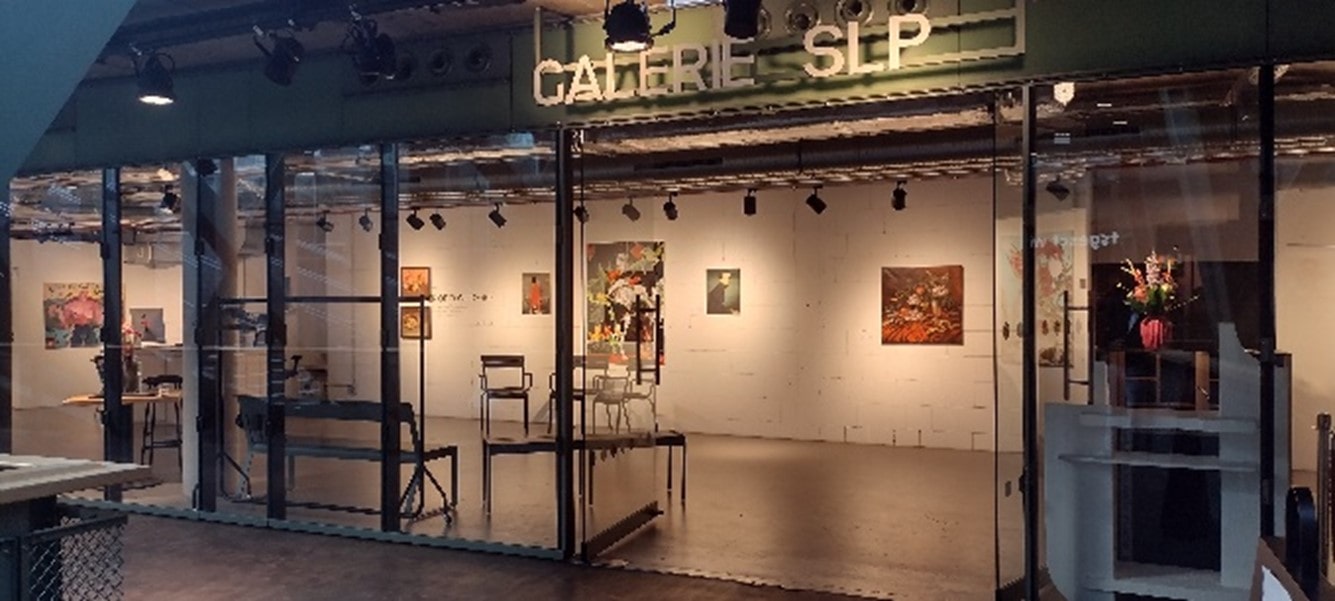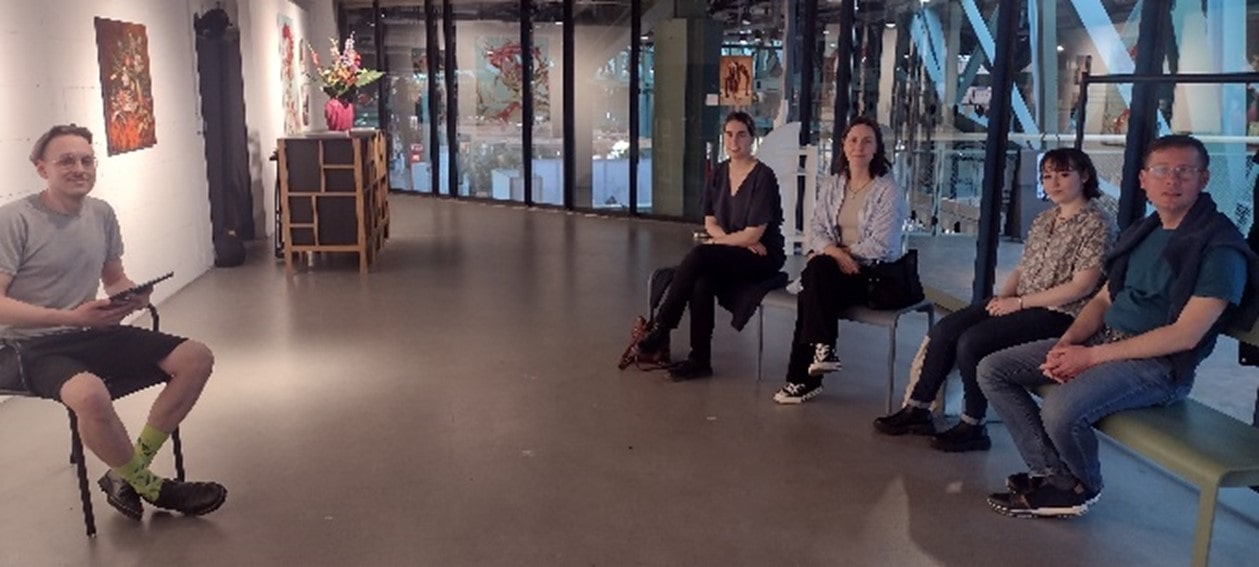Circular Creatives is based on the understanding and acceptance that the creative industry cannot regain its pre-pandemic level without introducing new methods to support and enhance the skills of creative professionals to meet the demands of modern business and future employment trends.
Global Impact Grid (GIG) played a pivotal role by offering a comprehensive overview of the essential stakeholders required to ensure the success of the Creative and Job Opportunities Exploratory Panel in Berlin, Germany. During the organization of Panel meetings, GIG compiled an extensive list of participants, including creative entrepreneurs, vocational education and training (VET) educators, professionals engaged in workforce development, representatives from creative sector networks, and development agencies. These individuals were invited to participate in the project, contributing their best practices and solutions tailored to address the genuine needs of the Berlin region.
These meetings and workshops served as the catalyst for the development of our Action Plan.
On 08.07.2022, GIG visited an artists’ co-working space in Berlin, Neukölln (Flughafenstraße 17, 12053 Berlin) which is used by 10-15 artists ranging from architects to visual artists, to craftsmen. The panel was held with the participation of the space’s 2 leaders and 6 other artists.
1.1. Win – What went well?
There were some insights given by the artists, which can be used for the next project results:
1.2. LEARN - What did you learn? What didn’t go well?
The artists that participated in the panel were not business- / profit-oriented. Their working concept already evolves around ‘zero-waste’ and it was not very clear for them how they can benefit from the ECCE project and its outputs. Still, during the exchange, some valuable insights could be received (explained above).
1.3. CHANGE – What would you do differently next time?
To be able to collect diverse insights, the next panels should try to attract creatives with more business / entrepreneurial drive.



2.1. WIN – What went well?
The right host who was well aligned with the topic, therefore inviting participants was easier.
The discussions around ‘When is a brand circular’ was encouraging. Metrics such as average no:of times an apparel such a t-shirt is worn and how increasing the average directly contributes to circularity and sustainability was insightful.
The focus should be on making sure that
The participants were forthcoming in suggesting how to be more circular given the context of Silfenstudio. In the absence of a context, it becomes difficult for participants to relate to and contribute. The following suggestion came up from the participants:

There were some insights given by the artists, which can be used for the next project results:
2.2. LEARN - What did you learn? What didn’t go well?
The assumed that building concepts or circularity and sustainability during early stages of business is much easier than in the later stages, turned out to be only partially true. While it is easier to drive the culture of thinking and designing products right from the early stages, it is not easy to operationalize from early on. There are certain aspects of business that is viable only after a certain scale. For e.g. the logistics of renting products is prohibitively high, even though the intentions are right. It is possible for larger companies but not a start-up or individual entrepreneurs.
2.3. CHANGE – What would you do differently next time?
To explore deeper relationship with businesses like Silfenstudio for better connection with creative entrepreneurs. Building on such networks would be beneficial in the long run.

On 12.05.2023, GIG organized the third panel meeting at SLP Galerie an art Gallery that promotes contemporary artists and painters. They operate in the creative arts industry and they hosted the meeting at their venue on behalf of GIG for the ECCE project. There were 8 participants. GIG started by presenting the project and introducing SLP Galerie to the participants. SLEP Galerie presented about their Galeria and how it supports budding artists and how they promote circularity through arts.

SLP Galerie takes prides from the fact that they provide space for artists from disadvantaged backgrounds. In addition to theme-based exhibitions, SLP also organizes exhibitions that implement circularity in arts by supporting artists who work with waste materials to produce arts. SLP is a truly inclusive art house which aligns well with the principles of Erasmus+ program.
The discussion followed the structure of a) GIG presenting the project and organization, b) SLP Galerie presenting about the Galerie and, c) open discussions to encourage participation from the participants.

3.1. WIN – What went well?
The right host who was well aligned with the topic, therefore inviting participants was easier. Also, the space and location of SLP Galerie provided an advantage by providing the right ambience for people to relate to the topic easily.
The discussions started by going around ‘How to implement Circularity in arts’. However, in contrast to the previous panel, this panel naturally gravitated to one of the vital angles of sustainability, which is, financial sustainability. Noble thoughts apart, one of the main reasons why circularity in arts is still an issue to be tackled is the lack of a financial model.
Some of the participants who were from music background brought this perspective out. Music though a creative, art, is not easily relatable when it comes to the concept of circularity. This is similar to the digital creative segment. Though creative, is difficult to relate to circularity.
The discussion was specifically related to IPR and how to monetize. SLP Galerie explained the business model of art galleries and how the value appreciation of art pieces never goes back to the artist.
The discussion was lively and invited participation of all the attendees. Some of the participants who had thought of circularity in their businesses went back with a commitment to implement circular practices in their line of functioning.

There insights given by the musicians, can be an area of exploration:
3.2. LEARN - What did you learn? What didn’t go well?
The event was an eye-opener to the areas of circularity which is difficult to think through. Some of the participants anticipated that some solutions or insights to their challenges may evolve as an outcome of the discussions. However, it is an area where we found ourselves inadequate.
3.3. CHANGE – What would you do differently next time?
In addition to explore deepering relationship with businesses like SLP Galerie, Silfenstudio (host of panel 2) for better connection with creative entrepreneurs, we also realized the need to engage with event partners who specialize in running events targeting either a) creative entrepreneurs, artists etc. or b) circularity/sustainability related events. Utilizing their existing events to take our project to a wider audience will definitely benefit the project. However, such organizations are a very targeted niche and hence finding and tying up with them will be a challenge that we would like to overcome next time.